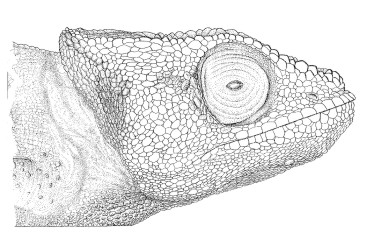
Contact:
Jöllenbecker Heide 49d
33739 Bielefeld
Germany
Email: SebastianGehring@web.de
Scientific Interests The herpetology is the branch of
zoology concerned with the study of amphibians and reptiles. I´m especially
interested in Madagascar´s unique herpetofauna. My PhD
project provides data on distribution ranges, taxonomy, phylogeny,
phylogeography and population genetics of selected amphibian and reptile
species of Madagascar’s east coast obtained by a distinct a-priori-sampling
design along a ca. 1,000km transect along the east coast, aiming to contribute
to the understanding of the diversity and evolutionary processes that shaped
eastern Madagascar’s unique herpetofauna. The dense geographic sampling and
geo-referencing of species to document distributions of samples accurately, was
then used to address a range of phylogenetic and phylogeographic questions. The
a priori sampling design was guided by the assumptions of the analytical
methods to be used and included as another parameter in analyses to evaluate
the impact of sampling on the inferences. Based on
the results of this thesis I (1) contributed to filling several major sampling
gaps for amphibians and reptiles of Madagascar’s east coast; (2) provided
crucial information on natural history, species distributions, species
assemblages and diversity patterns; (3) proposed identification of important
regions for further research and in situ conservation activities; (4)
collected many important tissue samples and voucher specimen, which will be an
important source for future research projects; (5) discovered previously
unknown i) deep conspecific genetic lineages , ii) (yet)
unconfirmed candidate species and iii) confirmed candidate species,
leading in several cases to a formal description of new species; (6) reconstructed
and assessed phylogenetic relations among and within species that revealed
unknown genetic variation and allows the delineating of taxonomic units; (7)
increased the knowledge on past and present biogeographic patterns and
processes which have triggered speciation along Madagascar’s east coast. Behavioural ecology of Chameleons During
my studies at the Another
point of interest is the study of chameleon behaviour. Chameleons are well
known for their colourful appearance and their ability to change colours.
Although the possibility of tetra-chromatic vision is indicated, UV –
reflecting colouration patterns have not been well studied in Chameleons so
far. My study provides first data on UV– reflecting patterns of body
colouration in malagasy chameleons. Three malagasy chameleon species (Furcifer
pardalis, Furcifer lateralis and Furcifer oustaleti) were
investigated in terms of UV – reflectance in body colouration, using a
reflectance spectrophotometer. The data indicated that several body regions
reflected in the UV, i.e. within 300 – 400 nm. |

